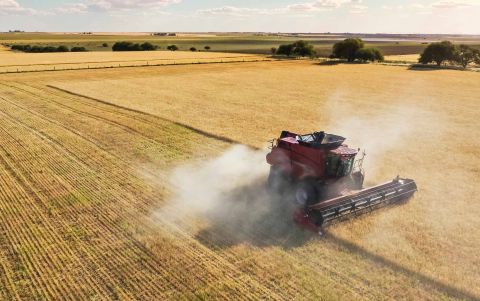Assessing tight global wheat stocks and their role in price volatility
- From
-
Published on
14.03.23
- Impact Area

by Joseph Glauber
OPEN ACCESS | CC-BY-4.0
The Russia-Ukraine war has caused significant price volatility in agricultural markets over the past year—for wheat, in particular, price levels and price volatility reached the highest levels since the 2007/08 marketing year. Both have fallen back to pre-war levels over the past six months, but volatility remains high relative to historical levels (Figure 1), indicating that significant market uncertainty remains, creating ongoing vulnerability for global food security.
Before 2022, volatility (measured by the implied volatility in the wheat futures market) spiked and remained high three times since 2006—in 2007/08 and then again in 2010/11 and 2012/13 (as indicated in the grey bands in the figure). Markets then remained relatively quiet until the recent spike following Russia’s invasion of Ukraine in February 2022. High volatility persists due to market uncertainty over the war and the relative tightness in stock levels, which provide little cushion against unforeseen production shortfalls.
Related news
-

ICRISAT to Deliver World-Class Services as CGIAR’s Breeding Resources South Asia Hub
International Crops Research Institute for the Semi-Arid Tropics (ICRISAT)07.07.25-
Biodiversity
-
Food security
Strategic collaboration to scale innovation and deliver harmonized, high-quality support across CGIA…
Read more -
-

Shaping policy changes for a sustainable cropping system in Uttar Pradesh, India
International Rice Research Institute (IRRI)03.07.25-
Food security
by Dr. Proloy Deb and Dr. Swatantra Dubey The Central Plain region of Uttar Pradesh…
Read more -
-

KOICA, UPLB, IRRI Partnership Establishes a Genomic Powerhouse to Future-Proof Agriculture
International Rice Research Institute (IRRI)01.07.25-
Food security
LOS BAÑOS, Philippines (26 June 2026) — KOICA, UPLB, and IRRI came together to showcase…
Read more -
